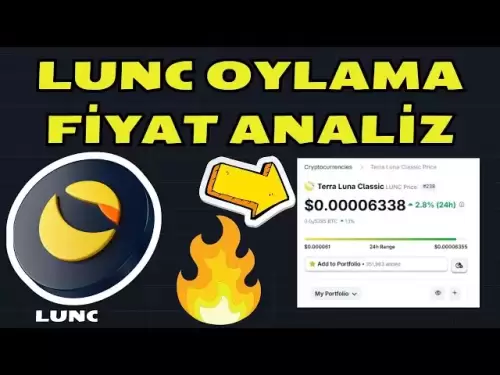-
 Bitcoin
Bitcoin $117500
2.04% -
 Ethereum
Ethereum $3759
3.02% -
 XRP
XRP $3.171
3.30% -
 Tether USDt
Tether USDt $1.000
0.03% -
 BNB
BNB $782.4
2.52% -
 Solana
Solana $187.2
5.62% -
 USDC
USDC $0.0000
0.02% -
 Dogecoin
Dogecoin $0.2380
5.26% -
 TRON
TRON $0.3175
1.07% -
 Cardano
Cardano $0.8227
4.03% -
 Hyperliquid
Hyperliquid $44.50
5.44% -
 Sui
Sui $4.020
10.07% -
 Stellar
Stellar $0.4396
6.28% -
 Chainlink
Chainlink $18.32
4.55% -
 Hedera
Hedera $0.2628
10.71% -
 Bitcoin Cash
Bitcoin Cash $554.8
4.90% -
 Avalanche
Avalanche $24.20
4.60% -
 Litecoin
Litecoin $113.7
2.31% -
 Shiba Inu
Shiba Inu $0.00001413
5.99% -
 UNUS SED LEO
UNUS SED LEO $8.984
0.11% -
 Toncoin
Toncoin $3.326
7.22% -
 Ethena USDe
Ethena USDe $1.001
0.00% -
 Uniswap
Uniswap $10.49
4.56% -
 Polkadot
Polkadot $4.092
4.02% -
 Monero
Monero $326.6
1.30% -
 Dai
Dai $1.000
-0.01% -
 Bitget Token
Bitget Token $4.570
2.49% -
 Pepe
Pepe $0.00001267
5.10% -
 Aave
Aave $297.3
3.10% -
 Cronos
Cronos $0.1344
4.10%
Differences between Binance options and contracts
Contracts, unlike options, carry the obligation to buy or sell an underlying asset, necessitating careful risk management due to their potentially unlimited losses and margin trading involvement.
Feb 17, 2025 at 10:00 pm

Differences Between Binance Options and Contracts
Key Points:
- Definitions and types of Binance options and contracts
- Key differences between options and contracts
- Trading strategies for options and contracts
- Risk management considerations
- Suitability for different investors
I. Introduction to Binance Options and Contracts
Binance Options:
- Derivative contracts that allow traders to speculate on the future price of an underlying asset without obligating them to buy or sell it.
- Two main types: Call options (bet on price rise) and put options (bet on price fall).
- Provide leverage, allowing traders to control a larger position with a smaller investment.
Binance Contracts:
- Perpetual futures contracts that track the underlying asset's price but do not have an expiration date.
- Allow traders to take speculative positions or hedge against risk.
- Involve margin trading, where traders use borrowed funds to increase their trading potential.
II. Key Differences Between Options and Contracts
Contractual Obligation:
- Options provide the right to buy or sell an asset, while contracts create an obligation to do so.
Premium:
- Options involve paying a premium upfront in exchange for the option right.
- Contracts do not require an upfront payment.
Expiration Date:
- Options have a fixed expiration date, after which they become worthless.
- Contracts do not have an expiration date and can be held indefinitely.
Margin Requirement:
- Margin trading is only required for contracts.
- Options do not require margin, reducing the risk of significant losses.
III. Trading Strategies
Options Trading Strategies:
- Bullish Call: Buy call options to profit from a price increase in the underlying asset.
- Bearish Put: Buy put options to profit from a price decrease in the underlying asset.
- Covered Call: Sell call options while holding the underlying asset to generate income.
Contracts Trading Strategies:
- Long Contract: Buy a contract to profit from a price increase in the underlying asset.
- Short Contract: Sell a contract to profit from a price decrease in the underlying asset.
- Scalping: Rapidly trading contracts to profit from small price fluctuations.
IV. Risk Management
Options Risk:
- Limited to the premium paid.
- Losses can be managed by choosing appropriate option strategies and adjusting strike prices.
Contracts Risk:
- Unlimited potential losses.
- Require careful risk management, including stop orders and position sizing.
V. Suitability for Different Investors
- Options are suitable for investors who want to speculate on price movements without the risk of large losses.
- Contracts are suitable for experienced traders who can manage the higher risks involved in margin trading.
FAQs:
What is the difference between a call option and a put option?
A call option gives the right to buy an asset at a fixed price, while a put option gives the right to sell an asset at a fixed price.
What is the maximum loss I can incur on an option?
The maximum loss on an option is limited to the premium paid.
What is the maximum loss I can incur on a contract?
The maximum loss on a contract is theoretically unlimited, as the price of the underlying asset can fluctuate indefinitely.
How do I manage risk when trading contracts?
Careful risk management practices include using stop orders, appropriate position sizing, and understanding the underlying asset's price volatility.
Which trading strategy is best for me?
The best trading strategy depends on an investor's individual risk tolerance, trading experience, and market conditions.
Disclaimer:info@kdj.com
The information provided is not trading advice. kdj.com does not assume any responsibility for any investments made based on the information provided in this article. Cryptocurrencies are highly volatile and it is highly recommended that you invest with caution after thorough research!
If you believe that the content used on this website infringes your copyright, please contact us immediately (info@kdj.com) and we will delete it promptly.
- Bitcoin Mining Goes Mobile: Apps & Strategies for Earning in 2025
- 2025-07-27 00:50:12
- Altcoins Primed for a 2025 Takeover: Undervalued Cryptos to Watch
- 2025-07-27 00:50:12
- Blockchain, Stocks, and Gold: A New Era of Financial Integration
- 2025-07-27 00:30:12
- IOTA Price and the Compliance Drive: How Institutional Adoption is Shaping the Future
- 2025-07-27 00:30:12
- XRP Price Swings, Unilabs Listing Heats Up, and Utility Coins Take Center Stage: What's the Buzz?
- 2025-07-26 23:30:12
- Ethereum Meme Coins: Can Punisher Coin Deliver 55x Gains?
- 2025-07-26 22:50:12
Related knowledge

Why is my Bitstamp futures position being liquidated?
Jul 23,2025 at 11:08am
Understanding Futures Liquidation on BitstampFutures trading on Bitstamp involves borrowing funds to open leveraged positions, which amplifies both po...

Does Bitstamp offer inverse contracts?
Jul 23,2025 at 01:28pm
Understanding Inverse Contracts in Cryptocurrency TradingIn the realm of cryptocurrency derivatives, inverse contracts are a specific type of futures ...

How to find your Bitstamp futures trade history?
Jul 23,2025 at 08:07am
Understanding Bitstamp and Futures Trading AvailabilityAs of the current state of Bitstamp’s service offerings, it is critical to clarify that Bitstam...

Can I use a trailing stop on Bitstamp futures?
Jul 23,2025 at 01:42pm
Understanding Trailing Stops in Cryptocurrency TradingA trailing stop is a dynamic type of stop-loss order that adjusts automatically as the price of ...

Can I use a trailing stop on Bitstamp futures?
Jul 25,2025 at 02:28am
Understanding Trailing Stops in Cryptocurrency Futures TradingA trailing stop is a dynamic type of stop-loss order that adjusts automatically as the m...

What are the trading hours for Bitstamp contracts?
Jul 24,2025 at 11:56am
Understanding Bitstamp and Contract Trading AvailabilityBitstamp is one of the longest-standing cryptocurrency exchanges, established in 2011 and head...

Why is my Bitstamp futures position being liquidated?
Jul 23,2025 at 11:08am
Understanding Futures Liquidation on BitstampFutures trading on Bitstamp involves borrowing funds to open leveraged positions, which amplifies both po...

Does Bitstamp offer inverse contracts?
Jul 23,2025 at 01:28pm
Understanding Inverse Contracts in Cryptocurrency TradingIn the realm of cryptocurrency derivatives, inverse contracts are a specific type of futures ...

How to find your Bitstamp futures trade history?
Jul 23,2025 at 08:07am
Understanding Bitstamp and Futures Trading AvailabilityAs of the current state of Bitstamp’s service offerings, it is critical to clarify that Bitstam...

Can I use a trailing stop on Bitstamp futures?
Jul 23,2025 at 01:42pm
Understanding Trailing Stops in Cryptocurrency TradingA trailing stop is a dynamic type of stop-loss order that adjusts automatically as the price of ...

Can I use a trailing stop on Bitstamp futures?
Jul 25,2025 at 02:28am
Understanding Trailing Stops in Cryptocurrency Futures TradingA trailing stop is a dynamic type of stop-loss order that adjusts automatically as the m...

What are the trading hours for Bitstamp contracts?
Jul 24,2025 at 11:56am
Understanding Bitstamp and Contract Trading AvailabilityBitstamp is one of the longest-standing cryptocurrency exchanges, established in 2011 and head...
See all articles

























































































